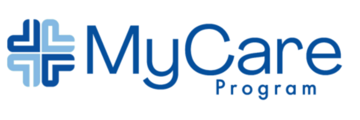Condition: Gout
Brief Overview:
Gout is a form of inflammatory arthritis characterized by sudden, severe attacks of pain, redness, and swelling in joints, caused by the deposition of monosodium urate crystals. It commonly affects the big toe but can involve other joints.
Prevalence:
Gout affects approximately 4% of adults in the United States and is more common in men and postmenopausal women.
Etiology:
Gout results from hyperuricemia, where elevated uric acid levels in the blood lead to crystal formation in joints. Causes of hyperuricemia include overproduction or underexcretion of uric acid.
Risk Factors:
• Male sex
• High-purine diet (e.g., red meat, shellfish)
• Alcohol consumption (especially beer)
• Obesity
• Use of certain medications (e.g., diuretics)
• Chronic kidney disease
Commonly Associated Conditions:
• Hypertension
• Diabetes mellitus
• Chronic kidney disease
• Cardiovascular disease
Common Medications:
• NSAIDs (e.g., ibuprofen, naproxen) for acute attacks
• Colchicine for acute and prophylactic treatment
• Corticosteroids for acute inflammation
• Urate-lowering therapies (e.g., allopurinol, febuxostat)
Common Labs, Imaging, and Tests:
• Serum uric acid levels
• Synovial fluid analysis (identification of monosodium urate crystals)
• X-rays to assess joint damage in chronic gout
• Ultrasound to detect crystal deposits
Common Symptoms:
• Acute onset of joint pain, often at night
• Redness, warmth, and swelling of the affected joint
• Tenderness, with difficulty bearing weight or movement
• Intervals between attacks may be asymptomatic
Common Treatments:
• NSAIDs, colchicine, or corticosteroids for acute attacks
• Long-term urate-lowering therapy to prevent attacks (allopurinol, uloric)
• Dietary modifications (low-purine diet)
• Adequate hydration
Physical Findings:
• Swollen, erythematous joint ((commonly the first metatarsophalangeal joint (big toe))
• Tophi in chronic gout (deposits of urate crystals under the skin, look like lumps under the skin around joints)
• Limited range of motion in affected joints
Potential Complications and Contraindications:
• Chronic gouty arthritis and joint deformities
• Renal stones due to uric acid crystals
• Contraindications for NSAIDs (e.g., peptic ulcer disease, renal impairment)
General Health and Lifestyle Guidance:
• Encourage a low-purine diet and weight management
• Advise limiting alcohol consumption
• Emphasize the importance of hydration to prevent crystal formation
• Highlight adherence to urate-lowering therapy (take medications as prescribed)
Suggested Questions to Ask Patients:
• How often are you having inflamed joints?
• What foods or activities seem to trigger your symptoms?
• Are you taking any medications (such as diuretics) for other conditions?
• Have you had any trouble with kidney stones?
• Do you eat a lot of red meat?
• Are you taking your preventative medication as prescribed without missing doses?
Suggested Talking Points:
• Explain the role of uric acid in causing gout and the importance of controlling levels.
• Highlight the benefits of lifestyle changes alongside medication. (See below)
• Discuss options for managing acute attacks and preventing recurrence (This would include having the patient talk to their doctor about medications to start within 12-24 hours of an acute attack. Preventing recurrence is related to taking preventative medication and eating an appropriate diet.
• Reassure patients that with proper treatment, gout is manageable.
• Explain to patient's that they may have increased acute flare-ups with the initiation of urate-lowering therapy.
Diet-Avoid:
• Organ meats (sweetbreads, liver, kidney)
• High fructose corn syrup (found in sodas, beverages, food)
• Alcohol
Diet-Limit:
• Beef, lamb, pork, and seafood with high purine content such as sardines and shellfish
• Servings of naturally sweetened fruit juices
• Sugar, sweetened beverages, and desserts
• Table salt, including in sauces and gravies
Diet-Encourage:
• Foods rich in dietary fiber, folate, and vitamin C decreased the incidence of gout
• Cherry consumption may be of benefit in gout prophylaxis
• Weight loss in overweight patients. Increased adiposity and weight gain are risk factors for incident gout
